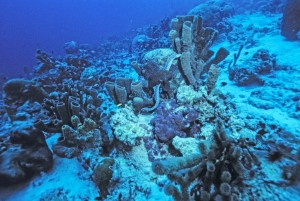
Biodiversity in the Seas is intended to promote effective application of the Biodiversity Convention in coastal and marine environments. It is based in large part on the recommendations. of the “Jakarta Mandate” agreed to by the Convention’s Parties at their Second Conference in Jakarta in November 1995. The Jakarta Mandate identifies the major threats to marine and coastal biodiversity, and the principal legal and policy measures needed to address them.
To support Parties’ implementation of the Jakarta Mandate, Biodiversity in the Seas explains the special challenges that marine and coastal biodiversity pose for achievement of the Biodiversity Convention’s objectives of conservation, sustainable use, and equitable sharing of the benefits from genetic resources. Equally important, it identifies the policy tools that will be most effective for implementing the Convention in marine and coastal areas. The recommended actions are defined in general terms, recognizing that the Convention is designed to allow Parties flexibility in implementing its requirements according to their cultural, political, biological and other circumstances. These general recommendations are illustrated by specific examples, drawn from efforts in countries all over the world. The discussion also highlights existing legal instruments through which the Convention’s Parties can and should implement the Jakarta Mandate.
This publication is intended to serve a variety of users, ranging from those who are developing national policies and international agreements relating to biodiversity, to managers of marine living resources working at the local and regional levels. The text is written in non-technical language as much as possible, and the level of detail is limited, to ensure accessibility and facilitate the widest possible distribution. Selected references are included for those seeking additional detail. We hope that this publication will help improve communication and coordination among its audiences, ultimately leading to more effective implementation of the Convention’s objectives.
